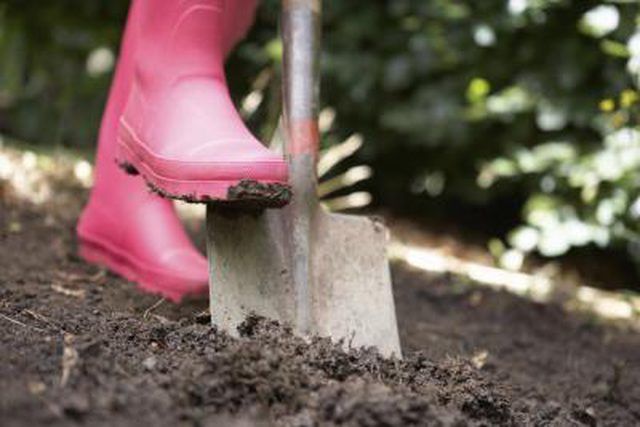Bulbs
Flower Basics
Flower Beds & Specialty Gardens
Flower Garden
Garden Furniture
Garden Gnomes
Garden Seeds
Garden Sheds
Garden Statues
Garden Tools & Supplies
Gardening Basics
Green & Organic
Groundcovers & Vines
Growing Annuals
Growing Basil
Growing Beans
Growing Berries
Growing Blueberries
Growing Cactus
Growing Corn
Growing Cotton
Growing Edibles
Growing Flowers
Growing Garlic
Growing Grapes
Growing Grass
Growing Herbs
Growing Jasmine
Growing Mint
Growing Mushrooms
Orchids
Growing Peanuts
Growing Perennials
Growing Plants
Growing Rosemary
Growing Roses
Growing Strawberries
Growing Sunflowers
Growing Thyme
Growing Tomatoes
Growing Tulips
Growing Vegetables
Herb Basics
Herb Garden
Indoor Growing
Landscaping Basics
Landscaping Patios
Landscaping Plants
Landscaping Shrubs
Landscaping Trees
Landscaping Walks & Pathways
Lawn Basics
Lawn Maintenance
Lawn Mowers
Lawn Ornaments
Lawn Planting
Lawn Tools
Outdoor Growing
Overall Landscape Planning
Pests, Weeds & Problems
Plant Basics
Rock Garden
Rose Garden
Shrubs
Soil
Specialty Gardens
Trees
Vegetable Garden
Yard Maintenance
How to Plant Emerald Cedar Trees
How to Plant Emerald Cedar Trees. A type of eastern arborvitae or American white cedar, the emerald cedar (Thuja occidentalis “Smaragd”) grows to 15 feet tall and 4 to 5 feet wide. Often planted close together to form tall hedges, it has a narrow, conical shape when planted alone. Reputed to keep its emerald hue better than most other...

A type of eastern arborvitae or American white cedar, the emerald cedar (Thuja occidentalis "Smaragd") grows to 15 feet tall and 4 to 5 feet wide. Often planted close together to form tall hedges, it has a narrow, conical shape when planted alone. Reputed to keep its emerald hue better than most other evergreens in U.S. Department of Agriculture plant hardiness zones 2 to 8, it does so most dependably in humid climates. Because smaragd is the Danish word for emerald, the tree is often sold under the cultivar names "Emerald" or "Emerald Green."
Things You'll Need
Shovel
Bone meal
Tape measure
Knife
Pruning shears
Garden gloves
Garden hose
Mulch
Dig a trench -- on a site with full sun and rich, loamy, well-drained soil -- if you want to make a hedge of closely planted emerald cedar trees. Make that trench as deep as the cedars’ root balls and whatever length you wish the hedge to be. If you are only planting a single cedar, dig a hole as deep as the tree’s root ball and three times its width.
Drop one handful of bone meal per tree into the trench or hole beneath where that tree will go, and work it into the soil.
Place cedars for hedging in the trench, still in their pots, so their trunks are 2 feet apart. Use a measuring tape so the trees will be evenly spaced. If you need to determine how far from a neighboring tree a single, freestanding cedar should be planted, add the mature width of both trees together and divide it by half.
Knock the cedars' pots lightly against the ground to loosen the root balls so that they slide out easily. If they don't emerge easily, cut away their plastic pots with a sharp knife. Leave the burlap on balled and burlapped trees, as that material decays quickly in the soil.
Uncoil and tease apart any roots that appear to have been circling the pot. Cut back, with sharp pruning shears, any that now extend below the original root ball.
Set the root balls of the cedars over the bone meal, and continue until all of them are in place. Remove any ropes or wires that might be securing the burlap.
Shovel soil back into the trench or hole until it is half filled. Stop shoveling and pack the soil down firmly around the roots, either stepping on it or tamping it with gloved hands. Water those roots thoroughly with a hose. Continue adding more soil until the trench or hole is full and water the cedars again.
Spread 2 to 4 inches of an organic material, such as wood chips, over the soil, but keep that mulch at least a couple inches away from the trunks. Water immediately after planting, making sure to saturate the roots. Keep the planting site moist but not soggy for the first four weeks after planting and while the roots establish themselves into the planting site. Thereafter, make sure the cedars get at least 1 inch of water per week.
Tips & Warnings
Although full sun and well-draining soil will produce the healthiest trees, arborvitaes tolerate partial shade and wet soils better than most other evergreens do, but don't expect them to grow in standing water.
Arborvitae shrubs are mildly toxic and can cause nausea or diarrhea if they are eaten. They may also irritate your skin, so wear heavy gloves while working with them.
Eastern arborvitaes are considered invasive in many northeastern and Great Lakes states.